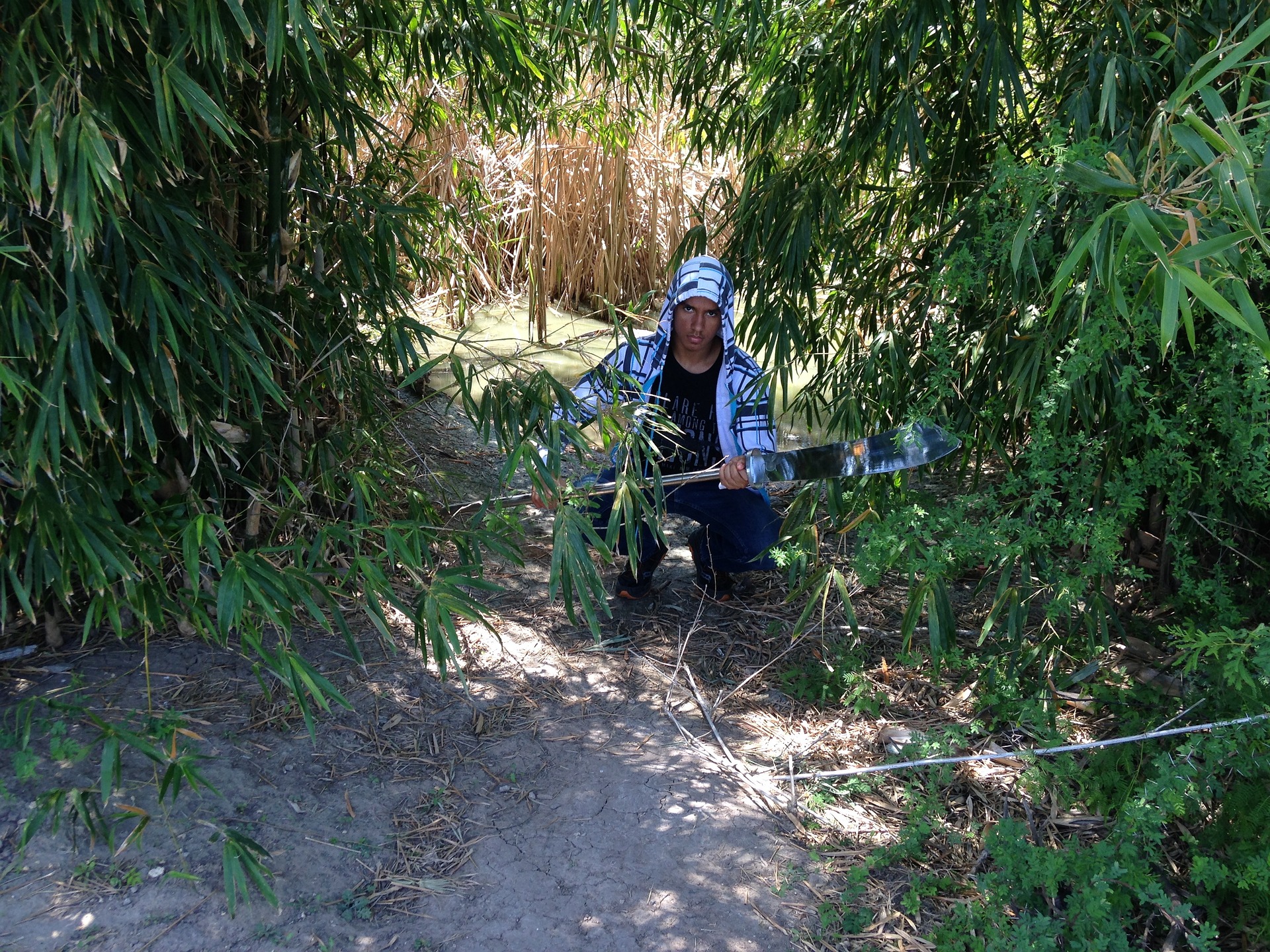The Rogue glances around themselves, mentally calculating how to get out of melee with the ooze. They slice into it with a dagger and use Cunning Action to Disengage before backing up to the far wall to stop the slimy foe from burning through their lovely armor. They just bought this stuff, after all, and they’re not going to let some acid ruin a perfectly nice studded leather!
But Cunning Action isn’t just for running away. There are plenty of things that you can do with your bonus action that still leave you with your movement and your action at the ready. Let’s jump right into how Cunning Action works and why Rogues love to use it.
Table of Contents
How Cunning Action Works
The Basic Text reads: Starting at 2nd level, your quick thinking and agility allow you to move and act quickly. You can take a bonus action on each of your turns in combat. This action can be used only to take the Dash, Disengage, or Hide action.
Dash
The Dash action allows you to move up to your movement speed. For example, if your Rogue can normally move up to 30 feet during a turn, you could use your Cunning Action to move 60 feet. If you really need to get somewhere, you could use your action to Dash as well and go 90 feet in a single turn.
Disengage
The Disengage action is quite helpful for Rogues who need to get out of melee combat without provoking attacks of opportunity. Anyone can spend their action Disengaging before they move in order to leave an enemy’s melee range (typically 5 feet for medium-sized creatures), but with Cunning Action, you can use your action to do something else, like attacking before using your bonus action to Disengage and safely leaving the combat zone.
Hide
Most Rogues use their bonus action to Hide because when you’re hidden from an enemy, you have advantage on your next attack against them. Considering that having advantage is the easiest way to get Sneak Attack, you should always try to have advantage whenever possible. You’ll need to have something close by that you can Hide behind, like a wall, a friend (if you’re a small creature and they are medium or larger), or some rubble.
When you choose the Hide action, you must make a Dexterity (Stealth) check against the target’s Wisdom (Perception). You might not always succeed on that check, but it’s worth a shot. With more recent optional rules from Tasha’s Cauldron of Everything, however, the bonus action Hide combo may not be as popular anymore.
With the Steady Aim feature, you can use your bonus action to automatically give you advantage on your next attack; no skill check needed. This isn’t to say that the Hide action has become obsolete; just that you need to carefully consider the situation. When you are successfully hidden, enemies who can’t see you also have disadvantage on any attacks against you. In fact, if they didn’t see you beforehand, they might not think to attack you at all.
If you have taken some big hits or don’t have many hit points, you might still prefer the Hide action over Steady Aim since there are other benefits. Typically, people who attack and then Hide to prepare for the next turn will still choose to Hide. Rogues who want to use their bonus action to give them advantage on their current turn, however, will likely choose Steady Aim.
Cunning Action Enhancements
Some of the Rogue subclasses grant certain features that add more actions or abilities to your normal Cunning Action feature. We discuss these in more detail below.
Arcane Trickster
Beginning at 3rd level, you get the Mage Hand Legerdemain feature. This gives you the cantrip mage hand and allows you to make the hand invisible and do some additional things with it. These include slipping an object into a container or pocket that someone else is wearing, stealing an object from a container or pocket on someone else’s person, or using thieves’ tools to pick locks or disarm traps. So, where does Cunning Action come into play?
The last bit of text in the feature says that you can use your Cunning Action to control the mage hand. Remember, this doesn’t allow you to cast mage hand with your bonus action, but if you already have the spell running, you can use your bonus action to move it around, pick a lock, disarm a trap, and give or take an item to someone else.
At 13th level, you gain the Versatile Trickster feature that gives you another ability with your Cunning Action, which is to designate an enemy within 5 feet of the mage hand to distract. When you distract an enemy, you have advantage on any attack rolls you make against them until the end of your turn.
Thief
At 3rd level, you gain the Fast Hands feature. It modifies your Cunning Action to allow you to use it to make a Dexterity (Sleight of Hand) check to use your thieves’ tools to pick locks, disarm traps, or Use An Object. It’s that last bit that gets a little tricky, though, because the Player’s Handbook says that items that require an action to activate, the Fast Hands feature can’t be used. What?
In the Sage Advice Compendium, WotC clarifies that Fast Hands can’t be used to activate a magical item. That means you can’t cast spells with Fast Hands or use your bonus action to make a magical item do anything. So, what good is this modification to Cunning Action?
Well, that’s where you need to get creative. Something like the healer’s kit is a mundane object that you could potentially use with Fast Hands. The only mundane item you can’t use with Fast Hands is a potion of healing. Although normally listed as a mundane item, they are technically magical and therefore don’t qualify. Some examples of items that qualify include:
- Acid- applying it to a weapon or spreading it on the nearest foe causes 2d6 + your Dex mod in damage.
- Alchemist’s Fire- this causes 1d4 + your Dex mod in damage initially, and then 1d4 every round afterwards unless the target spends an action cleaning themselves off. At lower levels when your enemies don’t have multiattack yet, giving up that action is quite costly. To balance that out, of course, this is a very expensive item for low-level adventurers.
- Caltrops- you can scatter these to create a 5ft square of difficult terrain which slows speed. The DC for caltrops is Dex 15 which might not seem like much at higher levels, but many foes aren’t proficient in Dexterity saving throws so this could still be effective much later on.
- Healer’s Kit- Even without the Healer feat, you can still use your Cunning Action to stabilize creatures who are currently dying. With the feat, you can restore hit points comparable to the healing word spell. Each kit has 10 uses, so you’ll need to restock occasionally.
- Holy Water- extremely situational since you could usually just use acid. However, fiends and undead are susceptible to holy water, and fiends often have resistance to acid damage, so you’ll want this on hand if you know what you’re dealing with ahead of time.
- Hunting Trap- even better than caltrops, enemies can’t simply move at half-speed to avoid the effects. It’s a lower DC, but when it activates, the target can’t leave the square until they spend an action to break free. Although hunting traps are more expensive, they are reusable, so you don’t need to buy new ones every time you go out.
- Oil- it’s cheap and effective. Spray it on an enemy and then get your spellcasters to unleash some fire.
- Poison- don’t do this. This is a huge trap. You might think that poison is a good idea, but it costs a whopping 100g per vial and has a save DC of just 10. You spend all that money, and even if the target fails the save, it’s only 1d4 damage. Not to mention the fact that a large portion of monsters in D&D have resistance to poison damage.
- Tinderbox- it’s not terribly clear why you would need to use your Cunning Action to light a match, but you can. Likely, it’s intended for characters who have used their action to set up something with oil or a bomb, but since you can use your bonus action to splash the oil, you’ll probably want to light the tinderbox with your action instead. Either way, blow those baddies to bits with wild abandon!
Once you’ve decided what you want to use, there’s another component to Fast Hands you’ll need to think about. Since you can Use an Item with your Cunning Action, you can use a two-handed weapon for your action while still (apparently) being swift enough to use your hands for your bonus action. For example, if you’re firing an arrow from a longbow, you can coat the arrow in acid before firing it in the same turn.
Alternatively, you could use Fast Hands to lob a vial of acid and still shoot your arrow. If you use an item to attack, you treat it as an improvised weapon, (assuming you don’t have the Tavern Brawler feat or proficiency in improvised weapons), and use your Dexterity modifier for your attack roll. Keep in mind that improvised weapons aren’t ranged or finesse so you can’t get your Sneak Attack in with them.


